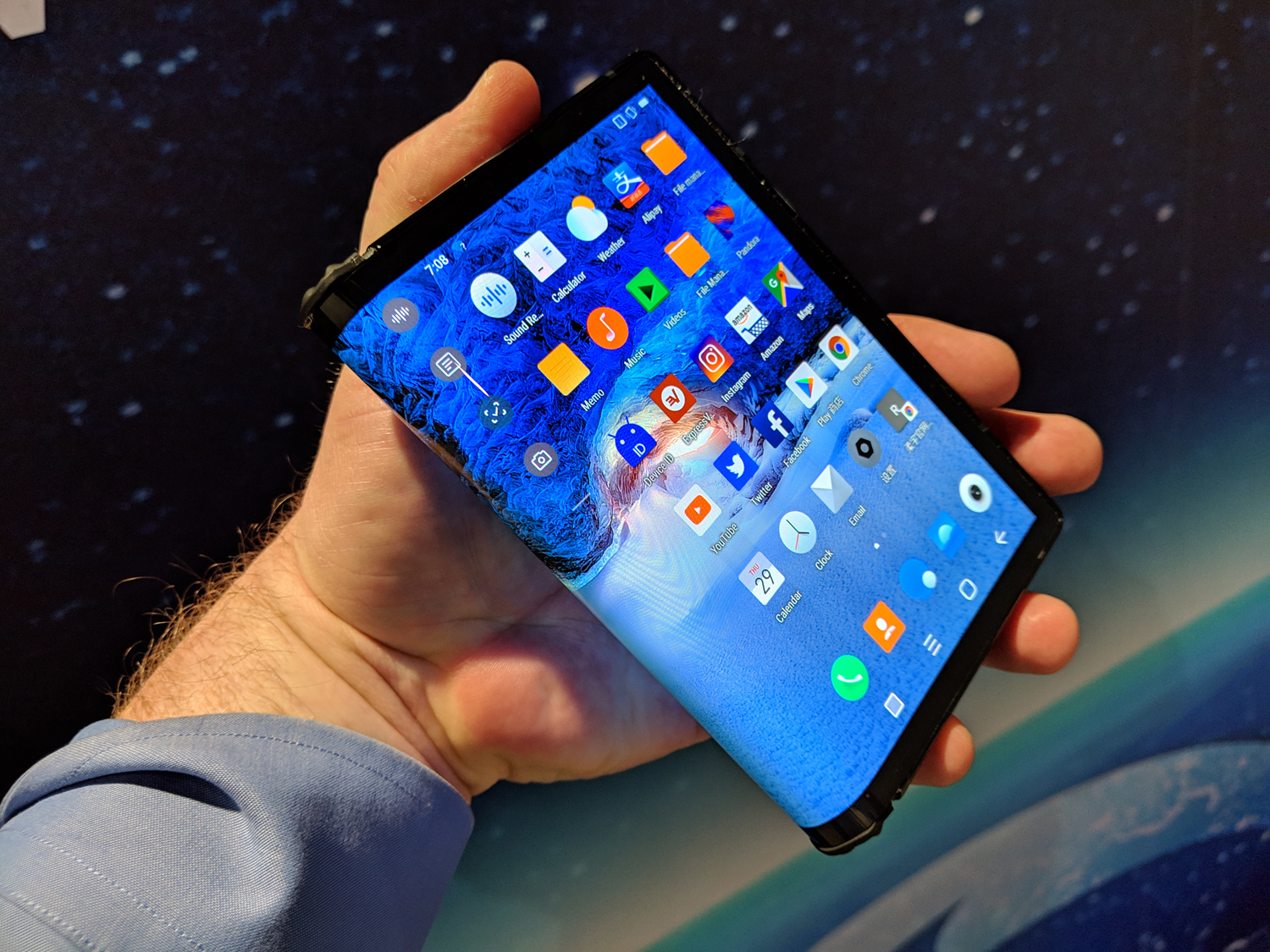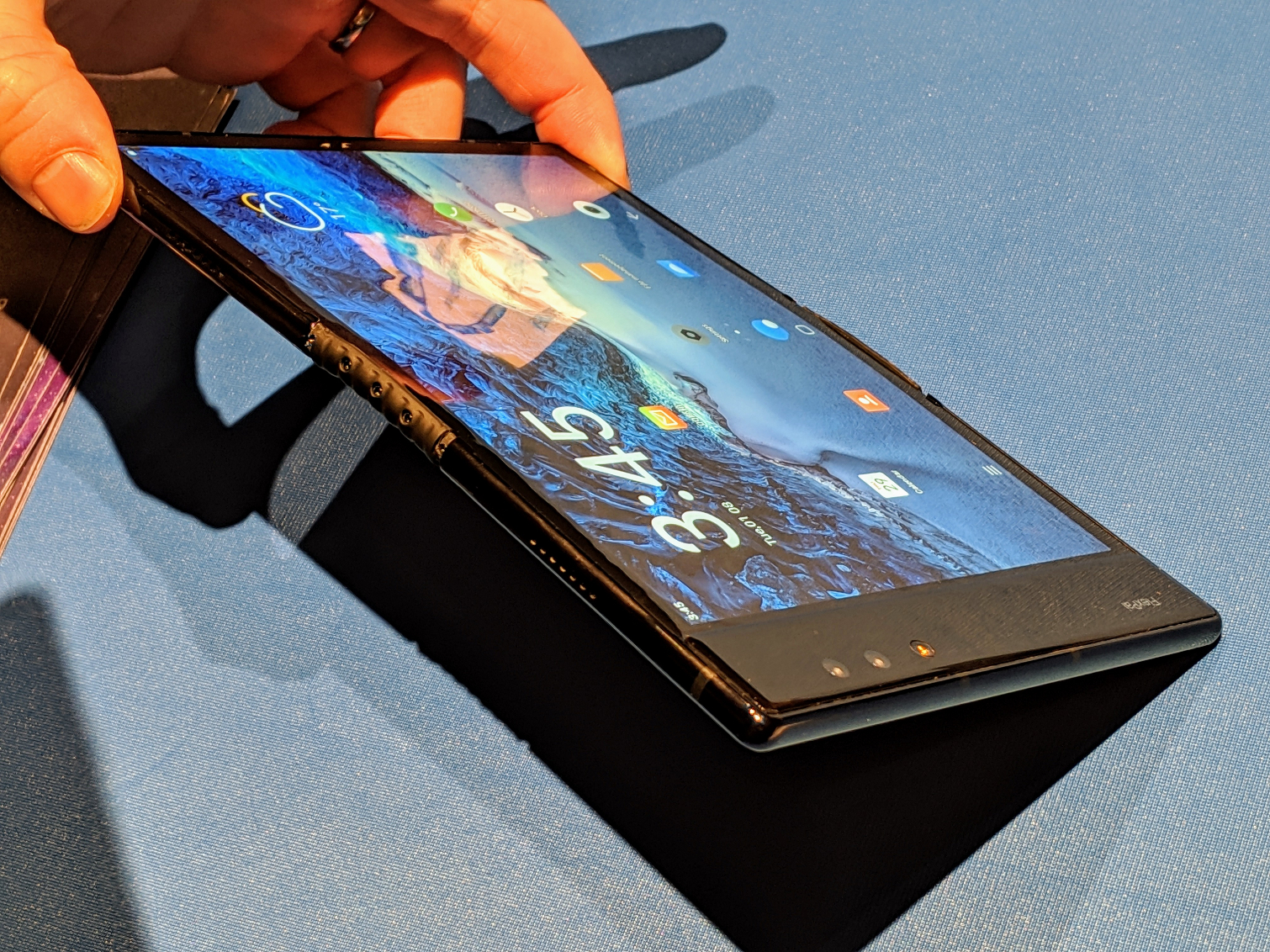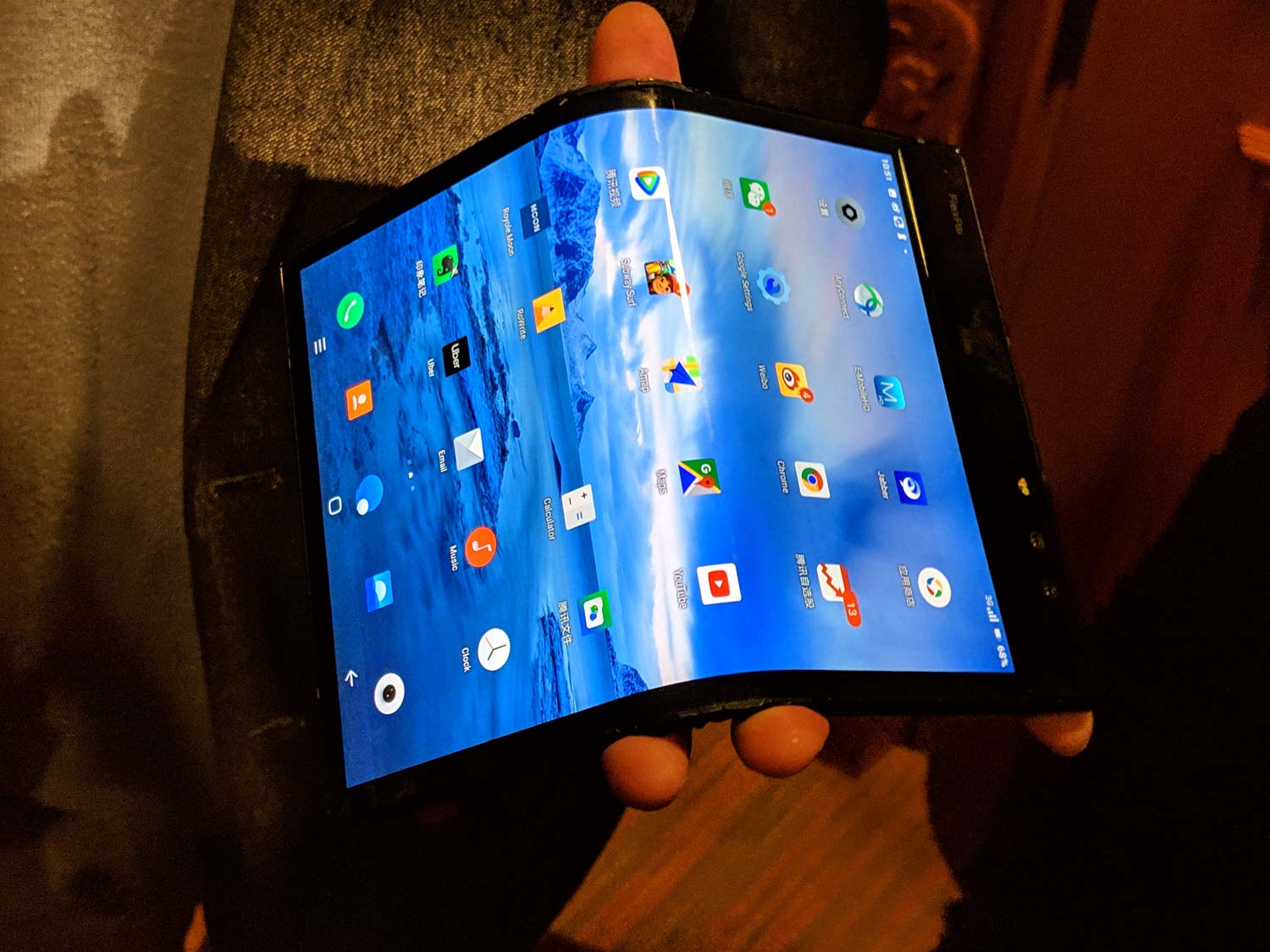Royole FlexPai Foldable Phone FAQ: What You Need to Know
The FlexPai is a $1,300-plus smartphone with a massive 7.8-inch screen that folds in half. Here's what we've learned so far about this new kind of mobile device.
With smartphone sales flatlining, device makers are looking for new ways to breathe life into familiar handsets. And that means turning to phones with more flexible displays, as several smartpone makers are rumored to be working on folding phones.

You don't have to wait to see what a folding phone might look like, though. The FlexPai from Royole is now available to order, giving us a sneak preview of where smartphone design is headed.
Here's what we've found out about the folding FlexPai after having a chance to take an up-close look at the phone.
What Is the FlexPai?
The FlexPai is a tablet-sized phone that folds in on itself to create a device that will fit in your pocket. Fully extended, the FlexPai has a 7.8-inch screen, but once you fold it in half, you've got two displays — one with a 16:9 aspect ratio and the other with an extended 18:9 ratio.
Royole originally unveiled the FlexPai at an event in China last October. But CES 2019 in Las Vegas was the first chance many in the U.S. got to see the phone in action.
How does it work?
Get instant access to breaking news, the hottest reviews, great deals and helpful tips.
Royole specializes in flexible electronics — think screens that can roll, bend and fold as well as sensors that can fit on curvy surfaces. And the FlexPai is Royole's opportunity to show off that technology is a shipping product.

The FlexPai has a hinge that runs down the middle of the 7.8-inch screen. On the back of the device, the hinge is hidden behind a rubbery plastic cover that doesn't exactly scream "premium device." On the screen-sie of the device, you'll notice a bump in the middle of the FlexPai's display when it's extended into its full size.
MORE: All the Incoming Foldable Phones
As you fold the phone, the apps on the screen gravitate toward the right. When it's folded, the left edge of the FlexPai will show notifications and incoming calls. And as we mentioned above, you can use the screens on both sides of the folded-up FlexPai, though you have the option of disabling the screen that's not facing you.
Royole is promising a durable phone, claiming that the FlexPai can withstand 200,000 bends. Try as we might, that's not something we had the chance to verify during our hands-on time with the device.
What's it like to use the FlexPai?
Some of the early videos we saw of the FlexPai suggested that the phone folded up very slowly, but it happens pretty fast. You need to put in a little bit of effort to fold the FlexPai — understandable since you wouldn't want the phone to collapse on its own — but once you start folding it, it's a pretty fluid experience.

You have more options than just using the FlexPai fully extended or folded in two. Like a 2-in-1 laptop, the phone also can be set up in a tent mode, which can be a handy way to watch videos or read articles on your mobile device.
While the 11.3-ounce FlexPai is heavier than other smartphones — for context, the Galaxy Note 9 weighs 7.1 ounces while the iPhone XS Max tips the scales at 7.3 ounces — Royole's phone didn't feel too heavy. Folded up, it slipped easily into the front pocket of my jeans, though I definitely noticed that it was there.
We still haven't had the chance to try out other aspects of the FlexPai, like using the phone's 16- and 20-megapixel cameras, which double up as both the front and rear cameras depending on how the FlexPai is folded. And we'd like to see what it's like to receive a phone call on the FlexPai.
What's the advantage of the FlexPai?
With smartphone screens now regularly topping 6 inches on flagship devices, it would seem that displays are big enough for most people. Still, there's no denying that it's easier to get more work done on a larger display. And according to Royole CEO Bill Liu, that's what the FlexPai is trying to address, giving users the advantage of a big screen in the portable form factor of a smartphone.
Presumably, the big screen will also mean more real estate for running multiple apps at once — Royole's Water OS is built on top of Android, and Google is adopting its mobile OS to better suit folding displays. But we haven't really seen demos of multitasking using the FlexPai yet.
What are the FlexPai specs?
| Price | $1,318 |
| Display (Resolution) | 7.8-inch AMOLED (1920 x 1440) |
| OS | Water OS (Android 9) |
| CPU | Snapdragon 855 |
| RAM | 6GB/8GB |
| Storage | 128GB/256GB |
| Cameras | 16-MP/20-MP (f/1.8) |
| Battery | 3,970 mAh |
| Size | 7.5 x 5.3 x 0.3 inches |
| Weight | 11.3 ounces |
Besides the 7.8-inch AMOLED panel and two cameras, the FlexPai will run on Qualcomm's new Snapdragon 855 chipset. You'll have a choice of 6GB or 8GB of memory, and you can opt for 128GB or 256GB storage, with a microSD slot letting you add another 256GB.
The FlexPai has a 3,970 mAh battery, which should provide enough power to get you through the day, though it will be interesting to see if keeping that larger display powered up drains the battery faster than a conventionally sized smartphone.
How does the FlexPai compare to other folding smartphones?
There aren't really any competitors for the FlexPai right now, unless you want to consider the ZTE Axon M, an AT&T-exclusive phone that debuted in 2017 to lackluster reviews. That's a big reason for the interest in FlexPai — Royole is showing off the phone and taking orders at a time when the foldable phones that other device makers reportedly have in the works remain rumors.
That could change as soon as next month, though. Samsung is holding a product launch on Feb. 20 in San Francisco, and while the Galaxy S10 figures to be unveiled at that event, we could also see the foldable Galaxy F that Samsung has promised for 2019.
We actually got a look at that phone's folding Infinity Flex display during last year's Samsung Developer Conference. The device Samsung showed off at that event features a 7.3-inch display that folds in half like a book. When it's closed, the Infinity Flex device features a 4.58-inch cover screen. Samsung is promising that you'll be able to run three apps at once on its foldable phone, positioning the device as a tool for multitaskers.
Get ready to pay up for Samsung's folding phone. Rumors suggest that it will cost $1,800 without carrier subsidies. If true, that's more than what Royole is current asking for the FlexPai.
What does FlexPai cost?
A developer model of the FlexPai with 128GB costs $1,318. Double the storage to 256GB, and you can expect to pay $1,469.
There's no arguing that $1,300-plus is a lot of money to pay for a smartphone, even one that folds in half. However, Royole's Liu noted at CES that the entry-level FlexPai developer model costs more than versions of the iPhone XS and XS Max that ship with 512GB of RAM.
When can I get a FlexPai?
Royole is offering its folding phone for pre-order right now, but even if you place an order today, you're likely in for a wait before the FlexPai winds up in your hands. At CES, a company rep told us that it could take up to 60 days to fill orders. And who knows — in that time, the FlexPai could see other folding phones, like Samsung's Galaxy F, hit the scene.
Philip Michaels is a Managing Editor at Tom's Guide. He's been covering personal technology since 1999 and was in the building when Steve Jobs showed off the iPhone for the first time. He's been evaluating smartphones since that first iPhone debuted in 2007, and he's been following phone carriers and smartphone plans since 2015. He has strong opinions about Apple, the Oakland Athletics, old movies and proper butchery techniques. Follow him at @PhilipMichaels.

